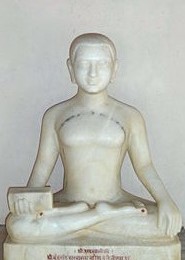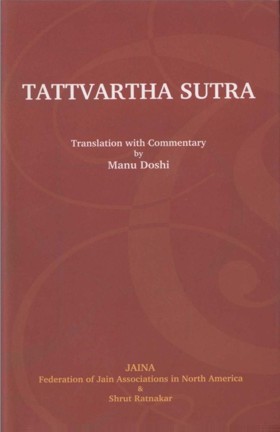03.02 Tāsu Nārakah
Audio: Sanskrit: तासु नरका: ।
Hindi: उन भूमियों में नरक हैं।
03.03 Nityāshubhatarleshyāparināmdehvedanāvikriyāh
Audio: Sanskrit: नित्याशुभतरलेश्यापरिणामदेहवेदनाविक्रिया: ।
Hindi: नरक नित्य (निरंतर) अशुभतर लेश्या, परिणाम, देह, वेदना और विक्रिया वाले है।
03.04 Parasparodiritaduhkhāh
Audio: Sanskrit: परस्परोदीरितदुःखा: ।
Hindi: परस्पर उत्पन्न किये गए दुःख वाले है।
03.05 Sanklishtāsurodiritduhkhāshcha Prāk Chaturthyāh
Audio: Sanskrit:
संक्लिष्टासुरोदीरितदुःखाश्च प्राक्चतुर्थ्या: ।
Hindi: चौथी भूमि से पहले अर्थात् तीन भूमियों तक संक्लिष्ट असुरों के द्वारा उत्पन्न किये गए दुःखवाले भी है।
03.06 Teshwekatrisaptadashasaptadashadwāvinshatitra-yastrinshatsāgaropamāh Satvānām Para Sthitih
Audio: Audio: Sanskrit: तेष्वेकत्रिसप्तदशसप्तदशद्वाविंशतित्रयस्त्रिंशत्सागरोपमा: सत्त्वानां परा स्थितिः ।
Hindi: उन नरको में स्थित प्राणियों की उत्कृष्ट स्थिति क्रमशः एक, तीन, सात, दस, सतरह, बाईस और तैंतीस सागरोपम है।
03.02-06
English: These five sutras describe the conditions prevailing in infernal abodes. They are very unwholesome, morbid and painful. The ghastly and sordid conditions prevailing in those areas go on increasing from the first to the seventh level. Those living there are termed as Nārakā (infernal beings). They inflict pain on one another. Moreover, demonic beings known as Bhavanapati (mansion-dwellers) come to the first three levels and inflict terrible pain to those inhabiting there. The infernal beings have very long life ranging from one to thirty-three Sāgaropams (ocean measured time) and they undergo intense and continuous pain for the entire lifespan. In order to avert the misery and pain, they try to end their lives; but their protean bodies cannot be destroyed before the scheduled end of their lifetime.
Jainism conceives of time and space, which cannot be expressed in mathematical figures; they can be explained only by similes. For instance, we make a chasm of 512 cubic miles and tightly fill it with fine particles of hair or fiber. Now if one particle is removed from it every hundred years, the time taken to empty the chasm is equal to a Palyopam. Trillions of such Palyopams make a Sāgaropam.
Description of the middle world (Madhyalok) starts from 7th Sutra. The Shwetāmbar version describes it within 12 remaining sutras. The Digambar version is slightly more detailed on account of 21 additional sutras. Tattvārthabhāshya and other commentaries of Tattvartha Sutra give still more details of that area.
 Acharya Umaswati
Acharya Umaswati
